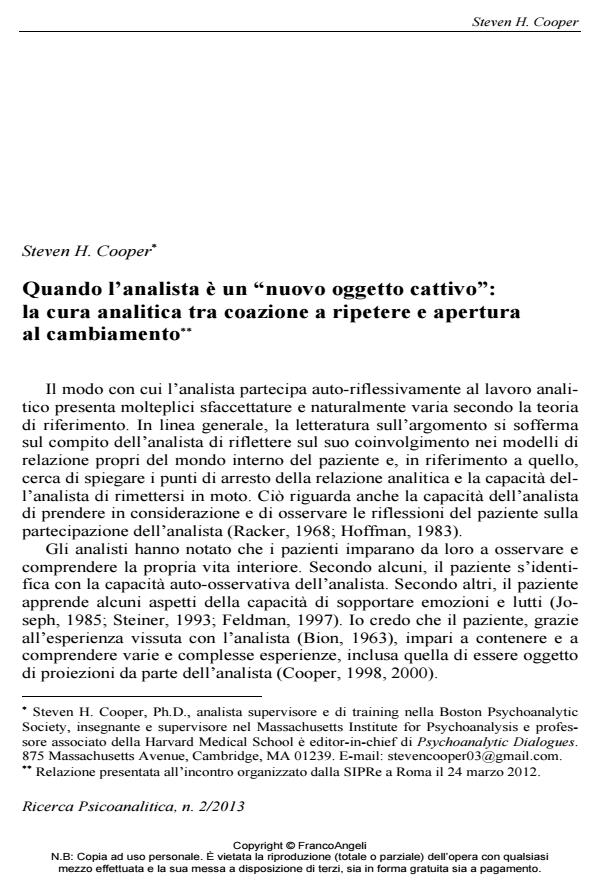When the analyst is a "new bad object": analytic treatment between repetition compulsion and opening to change
Journal title RICERCA PSICOANALITICA
Author/s Steven H. Cooper
Publishing Year 2013 Issue 2013/2
Language Italian Pages 20 P. 85-104 File size 238 KB
DOI 10.3280/RPR2013-002006
DOI is like a bar code for intellectual property: to have more infomation
click here
Below, you can see the article first page
If you want to buy this article in PDF format, you can do it, following the instructions to buy download credits

FrancoAngeli is member of Publishers International Linking Association, Inc (PILA), a not-for-profit association which run the CrossRef service enabling links to and from online scholarly content.
The seminar intends to stimulate a reflection on the self-reflective aspects of the analyst’s participation in the process. In particular, with the help some clinical examples, the discussion focuses on the inevitable re-proposition by the analyst of the familiar relational models on which the patient structured his internal world. Because of elements of his own personality, the analyst might re-propose himself as a “new bad object”, i.e. a disapproving and disconfirming object (Fairbairn), and might have to engage a fight with himself in order not to be trapped in the role of the ancient object. Steven Cooper, who discussed these themes in his 2010 book, A disturbance in the field, states that the patient emotionally perceives the flows of the analyst’s internal fight and, for this reason, the analytic couple can understand repetition if the analyst is able to maintain a constant self-reflective position. This is an important part of therapeutic action. Follows a wide-ranging historical review of the concept of therapeutic action in relation to the analyst’s inevitable limits in performing his role.
Keywords: Bad object, self-reflectivity, repetition compulsion, changing, psychoanalytic process, relational patterns
Steven H. Cooper, Quando l’analista è un "nuovo oggetto cattivo": la cura analitica tra coazione a ripetere e apertura al cambiamento in "RICERCA PSICOANALITICA" 2/2013, pp 85-104, DOI: 10.3280/RPR2013-002006